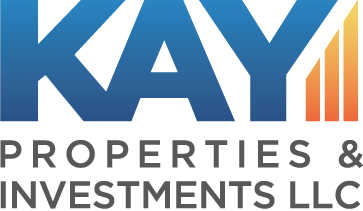By Orrin Barrow, Senior Vice President, Kay Properties and Investments, LLC
Wondering how zero cash flow properties can work for you? If you are a highly leveraged investor with a 1031 exchange transaction, a zero cash flow investment may be your next best strategy. This strategy is favored by investors with a 1031 exchange transaction in which they have a loan between 65-90% of the value of the building they have recently sold.
As you survey the 1031 DST offerings at www.kpi1031.com, you will see that a majority of the DSTs are either debt-free (having a 0% loan to value) or have moderate leverage (40-60% loan to value). If you are above this threshold, then Kay Properties and Investments can provide a blended option that will include a zero cash flow investment.
What is a Zero Cash Flow Property?
Zero cash flow properties, also known as Zero Coupon DST Offerings or simply “Zeros,” are properties that produce no cash flow to the owner. A zero cash flow property can be used as an investment strategy. Particularly in the form of a Delaware Statutory Trust (DST), they can provide investors with an opportunity to achieve equity growth and capital preservation through ongoing principal paydown. This is done as part of satisfying high debt replacement requirements.
Zero cash flow properties are structured so all net operating income (NOI) is received by the lender in the form of principal or interest payments. And, zero cash flow properties can help when considering 1031 offerings as these exchanges may require an equity or debt requirement to be fulfilled.
What to Look for in a Zero Cash Flow Property Investment
When browsing zero cash flow properties for sale, you will want to consider mission-critical facilities that have tenants with strong balance sheets and investment-grade credit. These facilities are categorized by being essential for organizations to operate, like corporate office headquarters, data centers, or even call centers.
Zero Cash Flow Properties: Why They May be Important for your 1031 Exchange Transaction
Zero Cash Flow Properties or “Zeros” typically have the following characteristics:
- No cash flow – A potential drawback of the zero-coupon DST offering is that it offers no cash flow. The asset is potentially producing cash flow (rent from the tenant) yet there is no cash flow to distribute to investors once the mortgage principal, interest and taxes are paid each month. This in large part is due to the high leverage associated with the offering. The majority of the monthly rental income from the tenant goes towards mortgage payments and interest hence the term zero cash flow.
- High level of debt assumption – The average zero cash flow offering has a loan to value of roughly 70-90%. This allows for investors to place a small amount of equity into a DST offering and buy a much larger amount of total real estate. For example, a $100,000 equity investment into a zero-coupon offering at a 90% loan to value could end up giving you approximately $1,000,000 of total real estate purchased for your 1031 exchange. This is precisely the reason why an investor would ever consider an investment that had no cash flow. The investor is faced with a tax situation whereby if they don’t purchase equal or greater value of the property that they sold in the new exchange property then they will owe a large amount of taxes. Thereby the zero cash flow offering provides a potential tax solution for the investor that can make a lot of sense
- Long lease term and hold period – Due to the larger size of the loan, the lease term (typically 15-25 years) and holding period is significantly longer than your average Delaware Statutory Trust investment (typical DSTs are held from 3-10 years). The hold period for these zero cash flow DST investments could be from 10-20+ years.
- Credit-Worthy Tenant – The majority of the zero cash flow offerings in the DST marketplace have investment grade (S+P BBB- or above) tenants. The investment grade of the tenant allows for the sponsor company (the asset manager responsible for managing your 1031 exchange investment) to get a much higher loan to value for an asset than is typically given for non-investment grade tenants.
- Phantom Income – The zero cash flow DST offerings for sale do offer a number of potential tax benefits with investors having the ability to utilize the larger mortgage and interest deductions. However, even though the investor is not receiving income, the asset is still generating income which is going to pay down the mortgage each month. As an owner of the property that income is attributed to you as the investor. This is where the term “phantom income tax” comes from. Investors are not receiving the income, yet they still will receive a tax bill for the income generated. To learn how to utilize the depreciation and interest deductions to minimize this phantom income tax please consult your CPA/attorney.
Now that we have defined the attributes of a zero-coupon DST offering let’s discuss potential scenarios in how it can be used.
- The typical scenario is when an investor approaches Kay Properties and needs a 70%+ Loan to value as a replacement for full tax-deferral under the 1031 exchange guidelines. At Kay Properties, we often will recommend a blended approach that will involve placing a portion of your equity into a zero cash flow DST investment offering while placing the remainder of your proceeds into offerings with a more moderate loan to value of approximately 50%.
- This scenario is a bit uncommon but gaining in popularity as more investors are looking to have the majority of their 1031 exchange capital allocated to debt free offerings. Investors with a 50% or lower Loan to value may place a small amount of equity inside of a zero cash flow DST investment offering while placing the remainder of their proceeds into debt free DST offerings. This will help to potentially reduce your risk profile by having the majority of your 1031 exchange proceeds free from the risk of foreclosure.
As always, we encourage investors to seek advice and guidance from their CPA and attorney regarding potential tax consequences and risk factors, prior to considering a 1031 exchange, DST offerings and zero cash flow DST investments. We also encourage investors that are interested in DST investments and zero cash flow properties for sale to register for free at the www.kpi1031.com marketplace for access to a multitude of DST offerings and zero cash flow DST offerings from over 25 DST sponsor companies.

